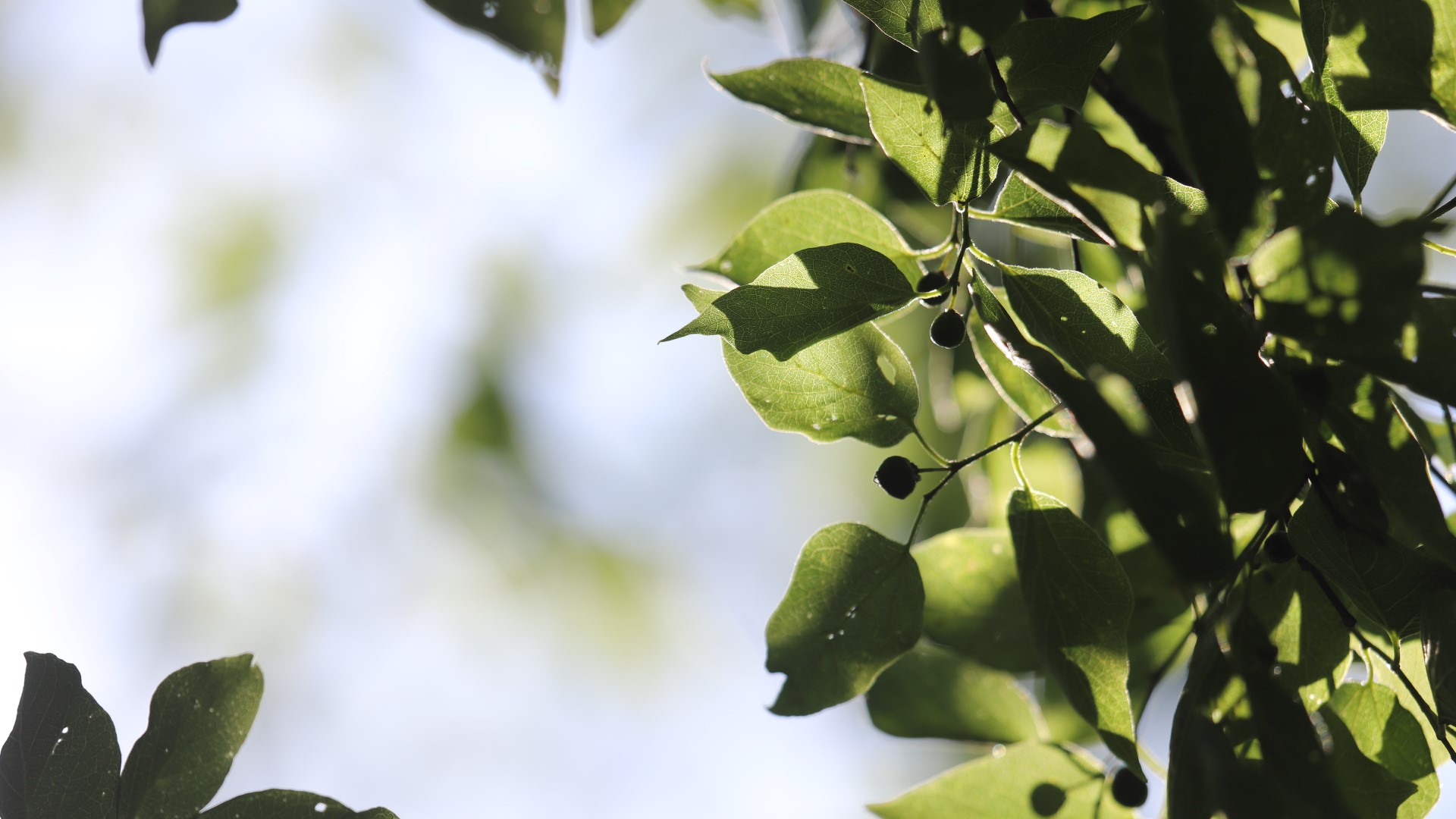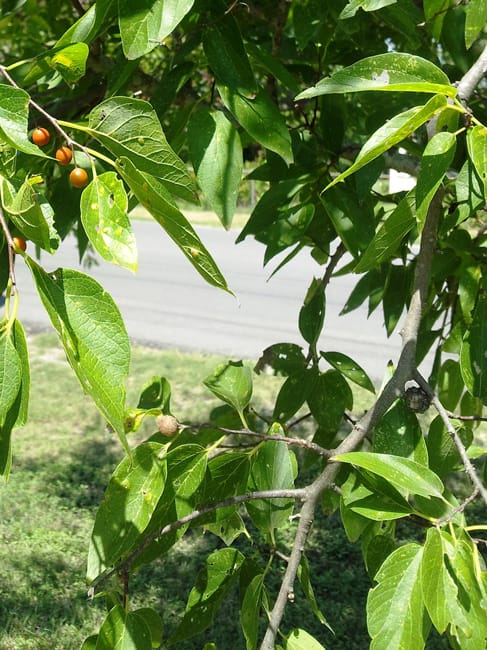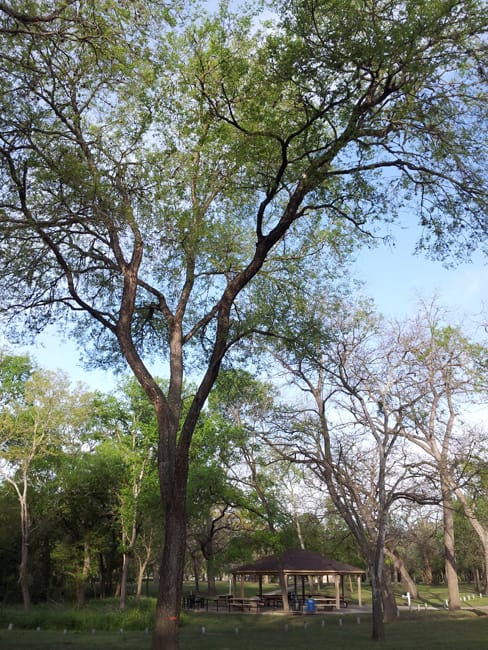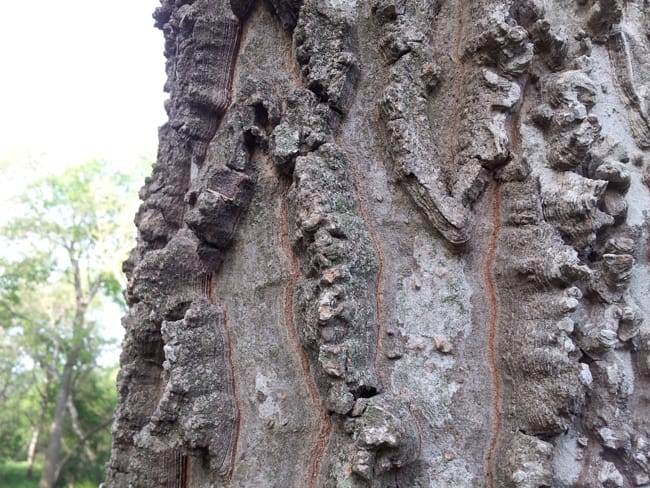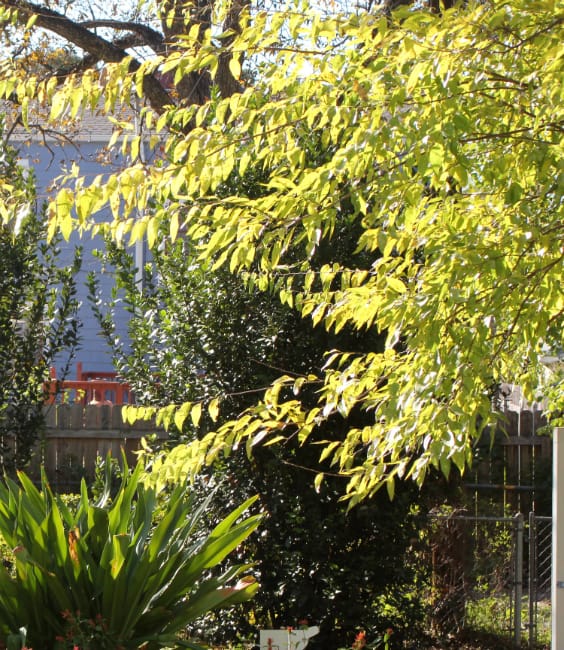Deciduous, with tattered, heavily veined leaves; easily identified by the corky projections on its bark. The fruit is a small stone with a sweet, date-like skin. With a fast, carefree growth habit, hackberry is omnipresent in shaded woodlands; when any opening appears overhead, it leaps up to take advantage of the sun.
Hackberry is often derided as a “trash tree” but it’s among the most valuable trees for wildlife. It’s also one of the most common shade trees in San Antonio — especially around apartments, driveways, greenways and alleys (where it is constantly planted by birds.)
Whether you’re trying to cultivate hackberry or not, expect some effort to weed it out of flowerbeds and fencelines. To grow it as a tree, make cuts only at a bud or branch; focus on minimizing damaged or rubbing limbs.
